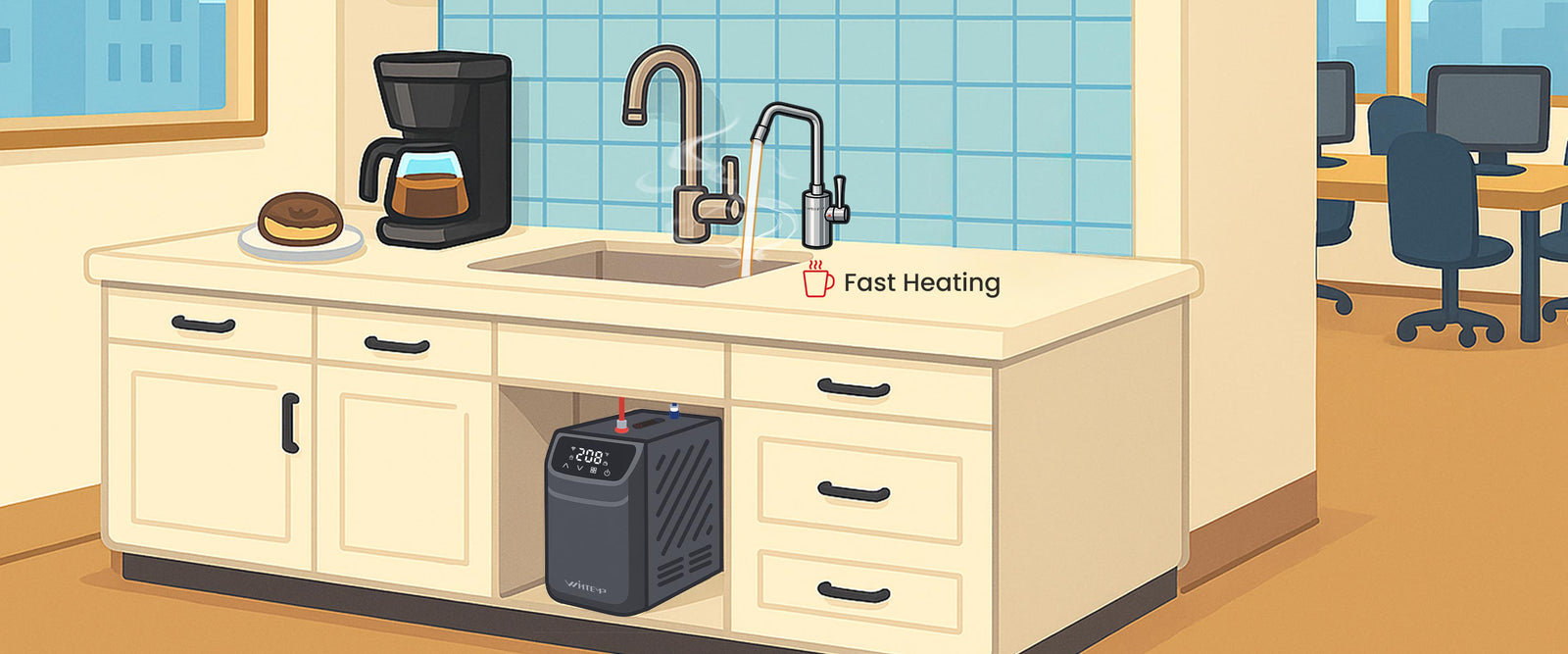Introduction: A Shift Toward Smarter Hydration
In today’s energy-conscious world, commercial spaces like offices, cafés, coworking hubs, and clinics are rapidly replacing traditional kettles with more efficient and user-friendly instant hot water dispensers. This transition reflects a broader trend in sustainable appliance adoption—driven by rising energy costs, labor-saving demand, and an emphasis on hygiene and convenience.

Why Businesses Are Making the Switch
1. Energy Efficiency
Traditional electric kettles typically use 2.0–3.0 kWh per boil, often with multiple reboils per day. In contrast, instant hot water dispensers like WINTEMP models maintain water at the desired temperature using insulated tanks or rapid-heating tech, consuming only ~0.5–1.0 kWh per day.
🧪 Example:
A UK-based energy audit comparing a traditional kettle (used 20x/day) and a 3.5L instant hot water dispenser found a 43% energy reduction annually.
2. Operational Convenience
- Faster delivery: Hot water is available immediately, improving staff efficiency.
- Safety features: Child locks, thermal protection, and anti-scalding mechanisms reduce accident risk.
- Auto-refill systems: Connected directly to the water line, eliminating manual refills.

3. Cost Savings Over Time
Though initial setup costs are higher (~$150–$300 for quality models), reduced power consumption and improved durability (5–8 year average lifespan) make instant hot water dispensers a more economical choice in the long term.
Emerging Trends in Commercial Use
1. Contactless & Touch Control
Post-COVID hygiene demands have accelerated the rise of sensor-based or single-touch instant hot water systems—especially in medical, food, and hospitality sectors.
2. Customization Features
Businesses now prefer machines with:
- Variable temperature settings (185°F to 212°F)
- Volume presets (for 1 cup, 2 cups, etc.)
- Display indicators showing usage and maintenance status
3. Space-Saving Designs
Wall-mounted or under-counter instant hot water systems are ideal for urban offices with minimal counter space. WINTEMP’s models, for example, feature compact footprints under 30cm width.
Real-World Application Examples
- Corporate Offices: Improve team productivity by reducing break time with instant tea/coffee water.
- Restaurants: Ensure consistent instant hot water supply for cleaning, beverage prep, or noodle dishes.
- Clinics & Schools: Use controlled temperature settings for patient/student-safe hydration.

Environmental Impact
Modern instant hot water dispensers contribute to greener business practices:
- Lower carbon footprint due to, reduced energy draw
- Water-saving through precise dispensing and anti-drip designs
🌿 Note: WINTEMP models comply with CE, ETL, and RoHS standards, ensuring energy-saving performance and sustainability compliance.
Conclusion
As commercial needs evolve, instant hot water dispensers are no longer just about convenience—they’re part of an energy-efficient, safe, and smart workplace infrastructure. Brands like WINTEMP are at the forefront, offering compact, durable, and feature-rich models for the next generation of commercial users.

